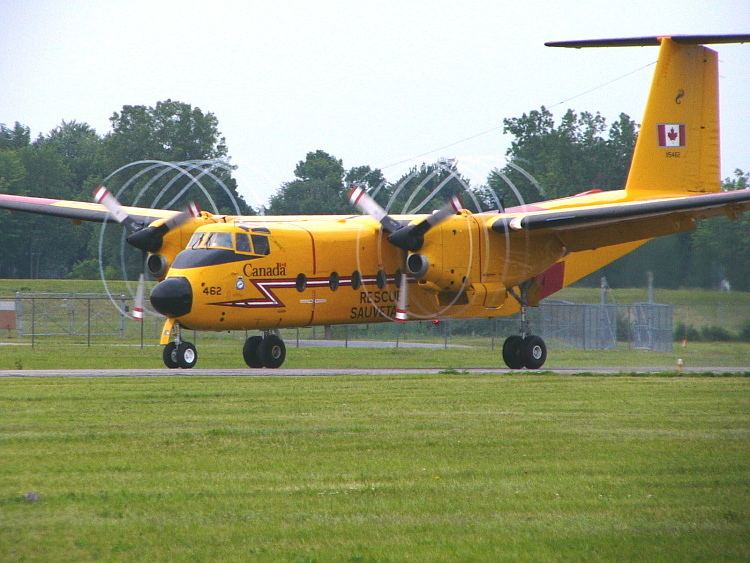 | ||
'Canadian Armed Forces Search and Rescue (CAFSAR) (Recherche et sauvetage des Forces armées canadiennes in French) is the collective name used to refer to search and rescue (SAR) resources and operations within the Canadian Armed Forces. CAFSAR is currently the responsibility of the Royal Canadian Air Force (RCAF).
Contents
History
Military search and rescue in Canada traces its history to 1942 when Wilfred May pioneered the concept of parachuting survival experts into airplane crash sites. The RCAF, impressed with "Wop's" rescue squad, enrolled the first three RCAF Pararescue jumpers in June, 1944. January 1945 saw the first RCAF pararescue course with graduates stationed to Dartmouth, NS; Sea Island, BC; and Edmonton, AB. The Royal Canadian Air Force and the Fleet Air Arm of the Royal Canadian Navy began to task aircraft resources for SAR operations and occasionally perform joint operations . Unification of the RCAF and RCN with the Canadian Army in 1968 formed the Canadian Forces (CF), at which time SAR operations were divided between Maritime Command and Force Mobile Command. It was only after the Canadian Forces Air Command (now RCAF) was created in 1975 that SAR responsibility was transferred to a single environmental command in the CF.
Contrary to popular belief, the Royal Canadian Navy is not identified as a primary SAR resource under the National Search and Rescue Program, nor does the RCN have a history of operating in this role. The formation of the Canadian Coast Guard in 1962, as well as its civilian predecessor agencies and some volunteer organizations, have held responsibility for the vast majority of maritime SAR operations in Canada since the 19th century. Pacific and Atlantic maritime SAR is directed from Joint Rescue Coordination Centres (JRCC) located at Maritime Pacific and Atlantic Naval Headquarters in Esquimalt, BC and Halifax, NS. The centres are manned by Royal Canadian Air Force and Canadian Coast Guard personnel. A third JRCC is located at Trenton, Ontario and is responsible for the Great Lakes and the North.
In 2014, the RCAF revamped its FWSAR replacement project to have the competitors suggest the best locations to base the aircraft out of.
Operations
Search and rescue operations cover the entirety of Canada's SAR Region (SRR) which measures 15,540,000 km2 (6,000,000 sq mi). Resources are operationally administered in three SAR regions by each respective Joint Rescue Coordination Centre (JRCC):
